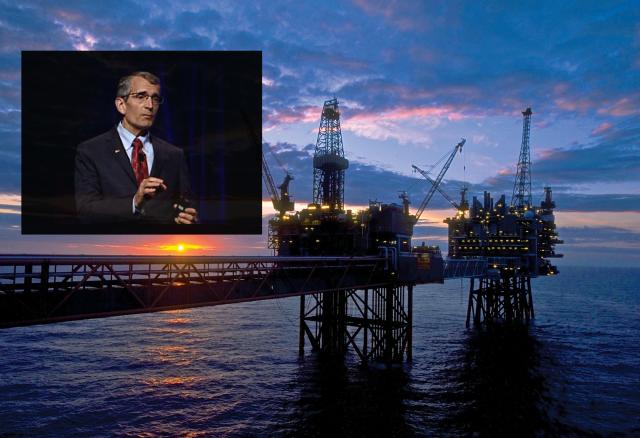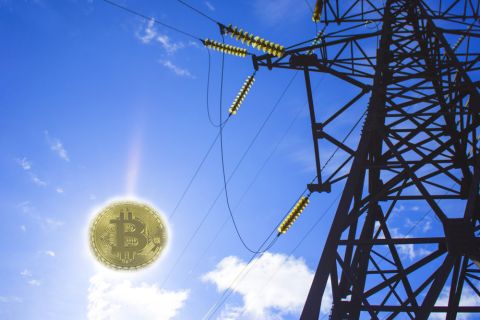
(Source: Hart Energy/ConocoPhillips Co.)
Despite the reign of unconventionals throughout the 2010s, a dramatic change to the perception of hydrocarbon abundance has altered the digital landscape for the oil and gas industry in the decade ahead, according to ConocoPhillips CTO Gregory Leveille.
“We really think the 2020s is going to be the decade that digital really comes into its own in our industry,” Leveille said during a webinar hosted by the Society of Petroleum Engineers on June 4. “For ConocoPhillips, three of our four big technology programs are digitally focused and the fourth one is really digitally enabled, so there is a lot of focus in that space.”
As ConocoPhillips shifts its focus to the development of its low cost of supply resources, the U.S. independent producer has also updated its technology roadmap. For the digital transformation to be effective in keeping the cost of supply low, Leveille said companies will need to couple traditional technologies with insights from digital.
Data analytics is one of the technologies ConocoPhillips is using to execute its digital effort. The company has coupled artificial intelligence with its traditional physics-based technology to stimulate and model the subsurface. Creating digital twins and reservoir simulation has made “a big difference” in understanding how the subsurface works, according to Leveille.
He said the company is also making a conscious effort to arm all of its petroleum engineers, geoscientists and business people with the skills of a data scientist to aid this mission.
“It's not to say that our traditional technology like the reservoir engineering and the production engineering capabilities are diminished in value, but being able to couple digital with those core technologies is really going to be the secret sauce as far as companies being able to continue to advance their ability to lower-cost supply and get ahead of sustainability issues,” he said.
ConocoPhillips’ commitment to be a low-cost supply producer is evident in its history.
Half a decade ago, the company took the first steps in its technology evolution by pulling out of deepwater exploration and development. The decision came during a period when Leveille said the company, like others, was eyeing the development of a number of challenge resources such as gas hydrates on the North Slope of Alaska, tight oil in Colorado, oil offshore in the Arctic and areas where there was sea ice on the surface six to nine months out of the year.
Although ConocoPhillips started in offshore, he said that deepwater was going to be a relatively high cost of supply to be engaged in so the company decided to opt out.
“Of course, today deepwater is the frontier in offshore and that’s where most of the new big discoveries will be made,” he said. “But we are really taking to heart this view that you need to have the lowest possible cost of supply to be a winner in this industry.”
He pointed out that offshore Guyana exceptional results show that there will be good deepwater discoveries but Conoco found that “overall it wasn't a new game we wanted to play or would be able to play effectively.”
The fate of unconventionals
Despite the shift, Leveille said there is still a lot to be learned and discovered in the unconventional space as demonstrated by ConocoPhillips’ Eagle Ford test site.
“This is where we drill the series of development wells, hydraulically fracture them and then drill multiple test wells through the hydraulically fractured reservoir to acquire core data, log data or pressure data,” he said. “We had fiber optics in some of the wells so there is quite an incredibly robust data set. From that data, we learned a lot about hydraulic fracturing and that’s really helping us form the approaches we’re taking today.”
The pressure data from the sites, he noted, has been useful in providing the hydraulic fracture network, some of the characteristics of profit distribution and how to stimulate rock volume where, surprisingly, the geometries from textbooks and computer-based models have been incorrect.
Also, ConocoPhillips plans to do follow-up projects at the site using refracs to get more out of the reservoir.
“Our experience has been [that] if you have rocks in the best part of the reservoir—the sweet spots if you will—you’re going to be able to do things there for the lower cost of supply and basically make those types of opportunities more competitive,” he said. “So, I think unconventional reservoirs are going to be coming back, but they are going to be in a world which is very, very competitive and where all the other asset types are trying to find ways to improve as well.”
As for unconventional EOR projects, Leveille urged companies to pursue alternative approaches that are customizable as opposed to the practice of applying technology used on conventionals.
Trends to watch
Moving forward, Leveille says real-time pressure monitoring will be the next revolutionary step change in unconventionals.
“When you look at the capabilities that are being developed as far as sensing technology and when you start thinking about how can you apply it when you’re pumping a hydraulic fracture, we know that the rocks talk to us. The rocks tell us about what’s happening downhole and it should influence how we design the fracture stimulation job,” he said.
Being able to monitor in real-time and using the information from sensors to understand what’s happening is going to be an area with a lot of opportunity, he said.
“The whole completion space has a lot of opportunity for automation, both on how you go about the mechanics of hydraulic fracturing as well as the downhole side of it,” he said. “Drilling is a bit further ahead in that space since we’ve seen enormous advancements there…but completions is not too far behind.”
Also, Leveille anticipates the accelerated adoption of open data tools sets. As a fragmented industry, gaining access to more data will allow producers to develop additional insights, he noted.
ConocoPhillips is actively investigating data sharing consortiums in the Bakken with global natural resources research consultancy Wood Mackenzie. The firm has gathered a collection of operators to share certain data that is not in the public domain to collectively provide better understanding of how to best operate and optimize well designs in the Bakken.
“The industry really does need to find ways to do this because in the final analysis, we’re not just competing with each other. We are competing with other sources of energy and, frankly, we’ve got to keep driving down the cost of supply for oil and natural gas,” Leveille said.
ConocoPhillips’ commitment to lower emission programs is still a high priority amid COVID-19, the CTO pointed out. The company is working with companies to monitor and detect methane emissions via sensor technology. It is experimenting with satellite detection and mounted devices on aircrafts, vehicles used in the field and in the facilities to identify and quantify methane accurately and efficiently.
Addressing the produced water issue in the Permian Basin, for example, ConocoPhillips is also being proactive with recycling technology. Recently, the company saw success with a microbubble floatation device in the basin. The company then deployed the technology in the Montney, which also showed favorable results.
In all, ConocoPhillips has strengthened its extensive low cost of supply resource base, allowing the company to divest higher-cost assets to high-grade its portfolio as its strategy evolves with the times—currently around the digital revolution. Having the ability to shift capital to other opportunities positions ConocoPhillips to both survive lower demand scenarios and stay dynamic in a cyclical industry.
“We’re moving into a decade that’s going to be incredibly complex for the industry,” Leveille said. “Things are moving fast and technology is changing. Once you find solutions that work, you have to get better as a company at spreading technologies across an organization and adopting things quickly.”
“Continue to upscale your capabilities, stay focused on learning, developing and broadening your network and relationships, and then stay optimistic about the longer-term future,” he continued. “We’re in a down period right now, but the industry will come back stronger as long as we keep innovating and finding ways to improve upon what we do.”
Recommended Reading
Report: Freeport LNG Hits Sixth Day of Dwindling Gas Consumption
2024-04-17 - With Freeport LNG operating at a fraction of its full capacity, natural gas futures have fallen following a short rally the week before.
Permian NatGas Hits 15-month Low as Negative Prices Linger
2024-04-16 - Prices at the Waha Hub in West Texas closed at negative $2.99/MMBtu on April 15, its lowest since December 2022.
BP Starts Oil Production at New Offshore Platform in Azerbaijan
2024-04-16 - Azeri Central East offshore platform is the seventh oil platform installed in the Azeri-Chirag-Gunashli field in the Caspian Sea.
US Could Release More SPR Oil to Keep Gas Prices Low, Senior White House Adviser Says
2024-04-16 - White House senior adviser John Podesta stopped short of saying there would be a release from the Strategic Petroleum Reserve any time soon at an industry conference on April 16.
Core Scientific to Expand its Texas Bitcoin Mining Center
2024-04-16 - Core Scientific said its Denton, Texas, data center currently operates 125 megawatts of bitcoin mining with total contracted power of approximately 300 MW.


